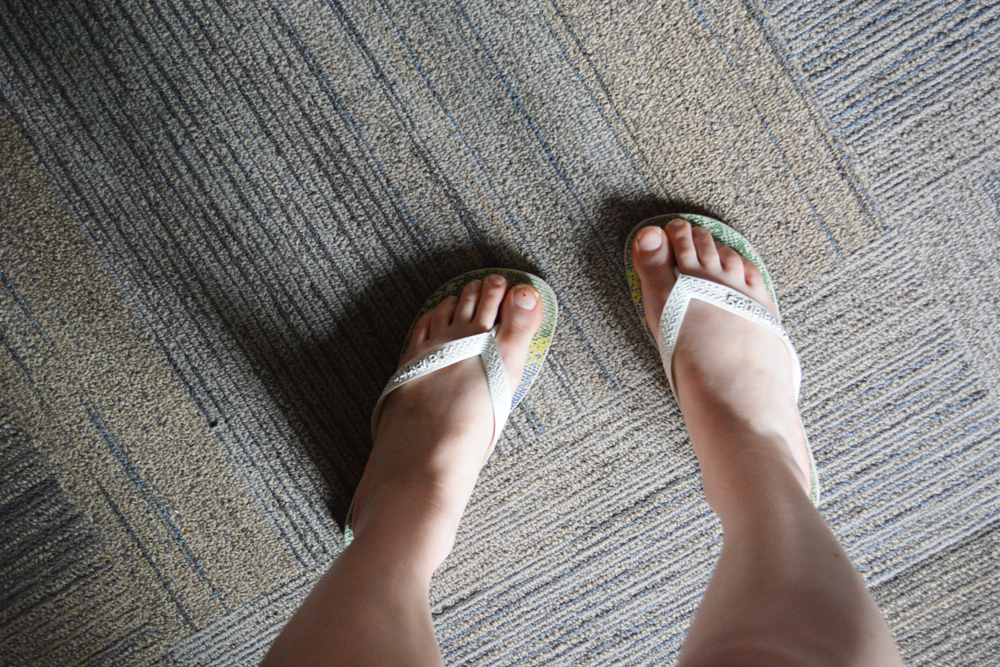Hiking Oregon offers wide variety of terrain
As warmer weather approaches, students may want to stretch their legs on one of Oregon’s scenic hiking trails.
Listed below are some of the region’s most popular trails, along with driving directions and hiking tips. All of the trails should be open year-round.
Local
For a city, Portland has a lot to offer in terms of hiking options. Seven areas within a 10-20 mile radius of downtown Portland offer hikers exceptional views, monuments, gardens and dense rain forests. Trails vary from flat to an elevation gain of 800 feet, and trail mileage ranges from easy 2-mile hikes to moderate 8.3-mile loops.
“100 Hikes: Northwest Oregon,” a guidebook by William L. Sullivan, recommends northern Forest Park. Sullivan calls it a “wilderness secret.” The moderate 8.3-mile trail loop has a 400-elevation gain that passes through large Douglas fir groves and thick woodland. Hopefully, by spring break, hikers will be able to enjoy violets and trilliums as well.
Northern Forest Park is located about 2-miles from the St. Johns bridge. From I5, take Lombard west exit 305 in North Portland. Drive west until you cross the St. John Bridge, turn right for .03 mile, then turn left onto NW Germantown road. Drive 1.5 miles up from this road to a gravel parking lot with a small sign that says, “Wildwood trail.
Gorge
Camping areas differ from full camping amenities to backcountry. Fishing, beautiful views, waterfalls and deep green rainforest are all elements of the gorge.
Charles Buell, Naches National Forest Service worker and fireman, recommends the Eagle Creek trail for beginners. The trail is a 12-mile roundtrip hike with an elevation gain of 400-1,200 feet. It is known as one of Oregon’s most spectacular paths, and hikers on it pass a dozen or so waterfalls.
The trail is popular. There are only four camping spots available along the first 7.5 miles and the competition is strong. Campfires are highly discouraged and trailside cliffs make this no place for hard-to-manage children.
From Portland, take I-84 to Eagle Creek Exit 41, turn right, and stay along the creek until the road ends. The trail starts there.
Mt. Hood
This mountain offers a variety of wonderful hikes and explorations. The east and west sides are each filled with hiking options and sites. Trails vary from easy to difficult and the mileage seems endless. Mt. Hood’s elevation is 11,528 feet.
Remember, during this time of year most everything is covered in snow and most hiking cannot be done without snowshoes. Numerous shops in Sandy, Hood River and Government Camp, as well as Portland State’s outdoor program, rent snowshoes. Also, do not forget that a 4X4 or a vehicle with chains will most likely be needed to reach trailheads.
For an easy 4-mile roundtrip hike, try going to the Central Salmon River near Zigzag. Hikers can enjoy fishing, old-growth trees and a bluff that allows for an amazing view of the river. Backpackers and serious hikers can continue on if they choose to go further on the demanding 15.7-mile loop to Devil’s Peak lookout tower.
The Salmon River is located 42 miles east of Portland. Take Highway 26 to Zigzag and turn south at a sign that reads Salmon River Road and follow the paved route 4.9 miles to a pullout on the left just before the bridge. The trail sign will be on your left.
Eastern Oregon
Eastern Oregon offers desert land, abundant in sage, juniper, rivers, mountains and extraordinary panoramic views. Activities in eastern Oregon include hiking, snowboarding, backpacking, fishing, camping and rock climbing.
“100 Hikes In Oregon,” by Rhonda & George Ostertag, recommends the Vic Atiyeh Loop, along and near the Deschutes River (which is known for its excellent fly-fishing). It is a 4.5-mile moderate loop with an elevation gain of 500 feet.
Named after a former Oregon governor, this hike runs upstream the Deschutes River and then climbs a canyon slope. An abandoned railroad track that is laid on both sides of the river gives the option of mountain biking instead of hiking.
The trail begins at the Deschutes River State Recreation Area. From I-84, about 17 miles east of The Dalles, take Exit 97 and go east on OR 206 to reach the park campground on the east side of the river. The trail leaves from there.
The Coast
The Ostertags suggest the Saddle Mountain Trail, which is a strenuous 5.9-mile trip that has an elevation change of 1,600 feet. Although it might be a tough hike, they recommend this hike for one of Oregon’s best vistas.
Mountain and ocean views are both available on this hike, and the botanical range of over 300 flora species is not a drawback. During the spring, hikers can view rare botanical species like the crucifer, Saddle Mountain saxifrage and bittercress, which grow only in this province.
From US 101-US 26 Junction, south of Seaside, travel 10-miles east on US 26. Turn north at the sign for Saddle Mountain State Park and proceed 6.9 miles until the road ends and there the trail begins.
Trail Etiquette
To ensure that all on the trail will enjoy themselves, hikers must follow certain etiquette rules. Forest Service worker Charles Buell suggests “blending in.” Try not to wear loud colors, play music from a stereo or leave garbage behind. “Pack out what you pack in,” he said, including toilet paper. Always remember to dig a hole and bury any human waste. Buell continued, “Try not to build a campfire and if you do make sure it is legal in that area and make sure it is completely out, watered down and buried before moving on. The point is to leave the area as if it has been untouched.”
For safety, bring a first aid kit, plenty of water, food, a trail map and a healthy respect of ticks. Try to wear long-sleeved shirts and pants. Check your clothes periodically for ticks, especially before getting into your car or tent. Let friends know where you are going before you leave. And leave a date and time of when you should be arriving back. “More information, the better,” Buell said. He discouraged people from hiking alone.



